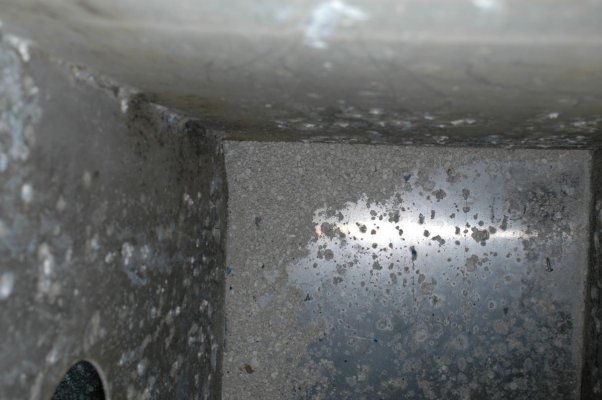Hi Geoleo,
That's great information. Thanks for sharing. Yours is the first confirmation of the actual nature of my "crusticles", your "mushrooms", and (I expect) Bud's deposits on the interior of his tank walls. The non-corrosive property of aluminum is often touted as its ability to naturally form aluminum oxide on its surface when in contact with air. There's a number of unpainted boats (hulls and topsides) on the market that appeal to many (myself included), as they don't require the typical maintenance issues (wax, paint) associated with other materials to maintain their structural integrity or appearance. And, because of their appearance, many find them too industrial and just plain ugly. To each his own, for sure.
But I've never found an explanation why this oxide, so benign on the exterior surface of aluminum, forms these damaging deposits on the inside of water tanks! I'm guessing it has something to do with the unique nature of the water contained within the tank, the relatively quiescent nature of the water within the tank, the presence of oxygen on the surface of the water, and who knows what else. The end result of this chemical and metallurgical mish-mash seems to be the alloying elements within the aluminum itself are drawn out of the tank walls, leaving a void (corrosion pit) underneath, ultimately leading to failure.
And of course, how to prevent them, or remove and mitigate their presence after the fact. The obvious solution is not to use aluminum for water tanks, which in a new build or a refit is an option. For those of us with aluminum tanks in place, I'm at a loss. Dealing with biologics in the water supply is amply covered by Peggy Hall and others. But I've not found any sound method of preventing this oxidation phenomenon from occurring. Perhaps a reverse osmosis treatment of ALL incoming tank water from day-1 of ownership would remove some of the "bad actors" such as chlorine and dissolved mineral salts commonly found in municipal water that (perhaps) contribute to these encrustations. Again, OK on a new build, but perhaps not much help 10-20 years down the road. And mitigation after the fact? Sheesh-there's a complex topic!
And, in my very personal opinion on the health aspects of drinking from such an encrusted tank, I'm OK with that. Assuming the biologics (and I include viruses as well) are dealt with in my water system, I'll continue drinking water from my aluminum tank aboard my boat, and live with the knowledge that they're probably crusticles growing on my tank walls. Your mileage may vary here, of course.
I feel I'm beating this poor horse to death, and the topic is perhaps more appropriate on some professional forum. Perhaps our professional brethren lurking on this forum might chime in here, and volunteer to launch such a discussion amongst their peers? And share the results? Oh please, oh please!!!!!
Regards,
Pete


